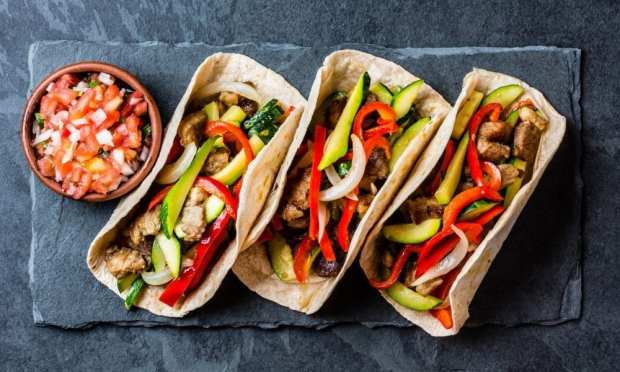QSRs Face The Dual Challenges Of Digital Fraud And Third-Party Competition

Restaurants face a tough fight, with a mere 40 percent survival rate in their first year. That fight is becoming more challenging amid the COVID-19 outbreak, with QSRs facing an upswing in fraud and high fees from third-party delivery apps that are now main revenue streams. For this month’s Mobile Order-Ahead Tracker®, PYMNTS spoke with Michael Mohammed, CEO of Chronic Tacos, about how AI helps reduce COVID-19-related fraud and why third-party apps make restaurants compete with themselves.
Opening a new business is especially challenging in the restaurant industry, where 60 percent of new establishments fail in the first year compared to 20 percent in other industries. This discrepancy results from numerous factors like fluctuating food costs and intense competition from other eateries, but one of the most significant is that restaurants’ profit margins average a slim 6.2 percent. Any difficulties that disrupt normal operations could therefore easily wipe out their savings and send them into insolvency.
The industry has only grown more turbulent in 2020 as the COVID-19 pandemic and its associated social distancing and stay-at-home guidelines have crippled restaurants’ revenue streams. Those that have not shut down completely are turning to digital channels like mobile ordering apps to continue operations, which has proven to be a positive development.
“We’ve seen a doubling in the amount of [app] users during this time,” Michael Mohammed, CEO of fast-casual Mexican chain Chronic Tacos, told PYMNTS in a recent interview. “Every restaurant that is surviving through this is seeing this change in customer behavior. We know that [dine-in] customers will come back, but there has been a shift in how people are approaching [quick-service restaurants].”
Switching to focus on digital orders also brings risks, however, especially because they provide new avenues for digital fraud as well as the potential for third-party app commission fees to eat into restaurants’ profits. The former is a problem that can be reduced by implementing artificial intelligence (AI)- and machine learning (ML)-enhanced solutions, Mohammed said, but the industry has no clear answer for the latter.
How AI Balances Security and Seamlessness
Sixty-two percent of quick-service restaurant (QSR) customers are concerned about fraud when interacting with a QSR app, according to a recent study. This is a well-founded fear considering 64 percent of American adults have been victimized by data theft. Passwords or QR codes may seem like solutions, but 40 percent of customers report being frustrated by these security measures because ordering requires too many steps. Finding a balance between security and speedy transactions is thus a constant challenge.
“There’s a certain amount of tries somebody does with an app, and if doesn’t get them to where they want, they probably close it,” Mohammed said. “I’m guilty of that. If it gets too difficult, I’ll find something else to do.”
AI-based systems offer a seamless security solution, he explained, as they can conduct fraud prevention completely behind the scenes without interrupting customers’ transactions. Chronic Tacos partnered with a third-party payment provider for its mobile app’s security system, with its AI-enabled anti-fraud system enabling this seamless experience for QSR customers. Such systems provide another advantage besides ease of use, Mohammed said, enabling QSRs to block new forms of fraud as they arrive rather than being forced to develop defenses after the fraud has already occurred.
“They’re analyzing things constantly and they’re learning based on their larger database in order to evaluate these transactions,” he explained. “When it comes to fraud, the only way to prevent it to really be a step ahead of them. So, it’s really about having the most recent technology and the most up-to-date platforms to just stay ahead, because [fraudsters] are always coming up with new ways to circumvent you.”
Outsourcing the ordering process to third-party apps like Grubhub and Uber Eats offers an alternative way for QSRs to deal with fraud issues, but letting such providers handle cybersecurity on their end is not ideal. These apps often charge high commission fees, for example, but working with them is for many QSRs the only way of transacting amid the pandemic.
The Catch-22 of Third-Party Ordering Apps
Third-party delivery apps present a few problems for QSRs, Mohammed explained. The first is the extra cost in commission fees typically ranging from 10 percent to 40 percent, which is bad news considering the low margins inherent in the industry. The second issue is that restaurants are essentially competing with these apps even though both are selling the restaurants’ food.
“They’re cannibalizing sales that probably could have either walked into your restaurant or utilized your own app,” he said. “There is a marketing value in that they are reaching a broader customer base, but there is a cost to that.”
The final issue is inconsistent quality control, Mohammed noted. QSRs lack the ability to control orders once third-party delivery drivers picks them up from their brick-and-mortar locations, meaning they cannot prevent drivers from putting them in their cars’ cold trunks or making other stops along the way that result in orders getting soggy. QSRs have no means to counter such issues, but they inevitably get blamed for them when customers do not enjoy their meals.
“At the end of the day, it’s still your product — even if somebody else is delivering it,” Mohammed said. “It’s still going to come back to you if it’s not delivered in the way that it should be.”
There is no clear answer to this problem, he added, especially as the ban on eat-in services during the pandemic is forcing restaurants to rely on third-party delivery services more to stay in business. Other revenue streams like dine-in services will resume once the virus recedes, but the shift in customer preference toward mobile ordering is likely here to stay. Restaurants will need to focus on the parts of their operations they control — like in-house apps, in-restaurant service and crafting good food — to maintain loyalty and make up for profits lost to third parties.

